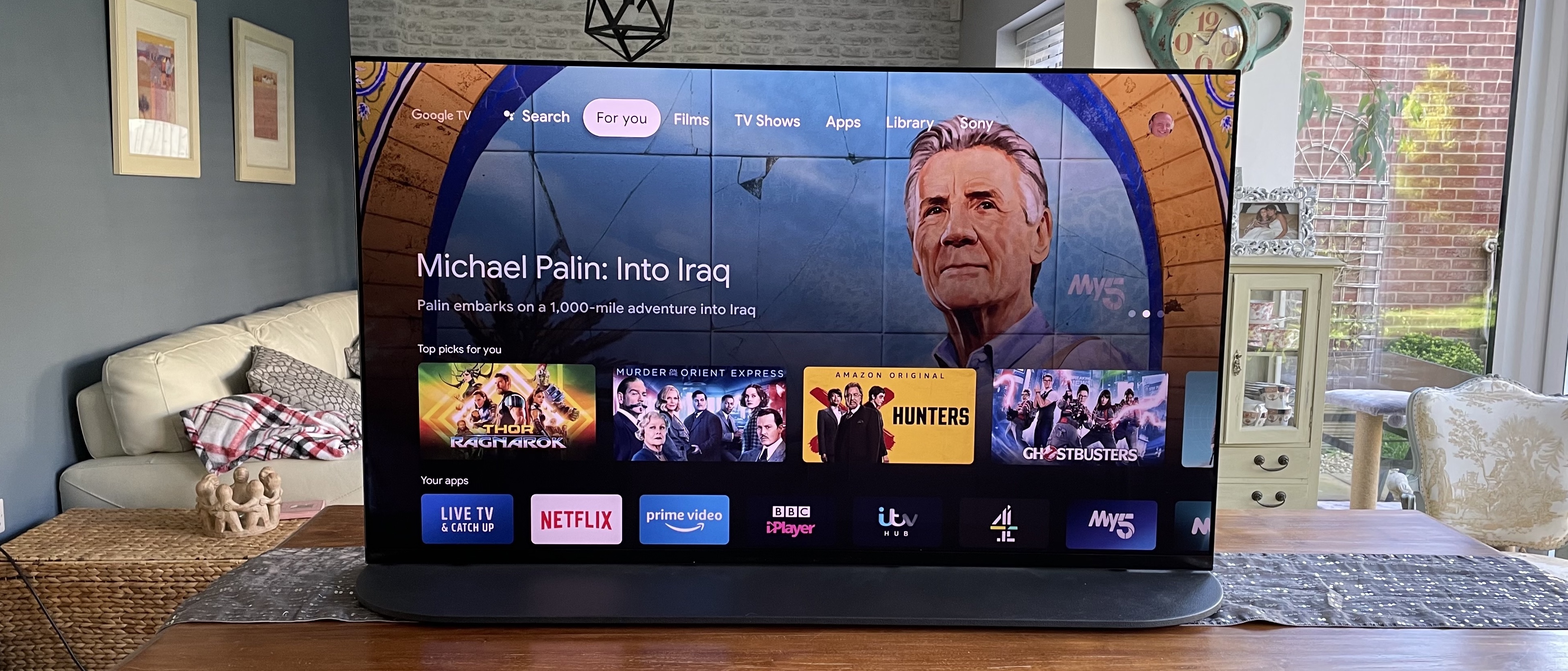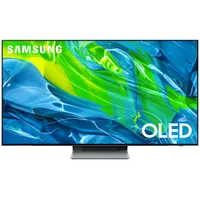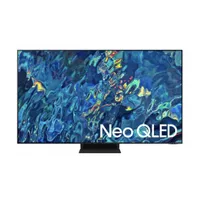TechRadar Verdict
The Sony A95K masters Quantum Dot OLED technology at the first time of asking. The ability of QD-OLED to combine OLED’s black level prowess and peerless light control with more brightness and purer color is beautifully managed by its picture processing engine, resulting in images so good they left us begging for more.
Pros
- +
Stunning picture quality
- +
Exceptional build quality and design
- +
Good sound quality out of the box
Cons
- -
Some connection frustrations and foibles
- -
No HDR10+ support
- -
Not quite as bright as hoped
Why you can trust TechRadar
Sony A95K: One-minute review
The Sony A95K makes a statement as soon as you get it out of its box thanks to its unique design. This lets you sit the screen right down at either the front or back of a full-width metal plate stand, giving you either a totally minimalist or slightly industrial look, depending on your preference. The immense build quality also leaves you in no doubt that you’re handling a premium TV.
The star feature of this Sony A95K review, though, is its image quality – as you hope, from a flagship set battling to be one of the best TVs of the year. Sony’s excellent Cognitive XR processor has joined forces with new Quantum Dot OLED screen technology to deliver arguably the most flat-out beautiful images we’ve seen from a consumer television. If you want the peak of what the world's best OLED TVs have to offer, then… here it is.
The A95K also follows previous Sony OLED TVs in delivering excellent sound quality using Acoustic Surface technology, where the TV’s screen essentially doubles up as its speakers, meaning that's also one of the best TVs for sound – though we'd still prefer to pair it with a full Dolby Atmos soundbar system.
The A95K’s smart features are built around a fairly comprehensive, if not always totally user friendly, Google TV software system (combined with YouView in the UK, where we tested it). This is backed up by strong voice recognition support and even a detachable camera accessory.
We tested the 55-inch version for this review, and this model is only available in a 65-inch version otherwise – just like the Samsung S95B. That's because these are the only sizes the QD-OLED screens come in, for now.
Sony A95K review: Price & release date
- Released in June 2022
- 55-inch version officially priced at £2,399 / $2,999
- 65-inch version costs $3,999 / £3,499 / AU$5,995
Despite being the first brand to formally announce a Quantum Dot OLED TV way back in January 2022 (beating the technology’s own creator, Samsung, to the punch), Sony actually took many months to get its A95K QD-OLED range in stores. Both the 55 and 65-inch versions, though, are now available in the UK and the US. Australia only gets the 65-inch version, however.
At £2,399 in the UK and $3K in the US, the smaller A95K is expensive for a 55-inch TV. In fact, following some recent huge price cuts, it’s more than a grand more expensive in both the UK and the US than even the only other 55-inch QD-OLED show in town, Samsung’s 55-inch S95B. Given how good Samsung’s S95B QD OLED sets are, this price difference really does put the A95K under serious pressure.
Sign up for breaking news, reviews, opinion, top tech deals, and more.
For more price context, Sony’s newest 55-inch regular OLED TV, the Sony A80K, costs $1,500 / £1,599, while the brand’s premium 55-inch LCD TV for 2022, the X90K, costs $1,199/£1,199. All of which confirms that unlike Samsung– which positions its QD-OLED TVs below its flagship Mini LED Samsung QN95B for price – Sony sees QD-OLED as the premium option in its 2022 4K range.
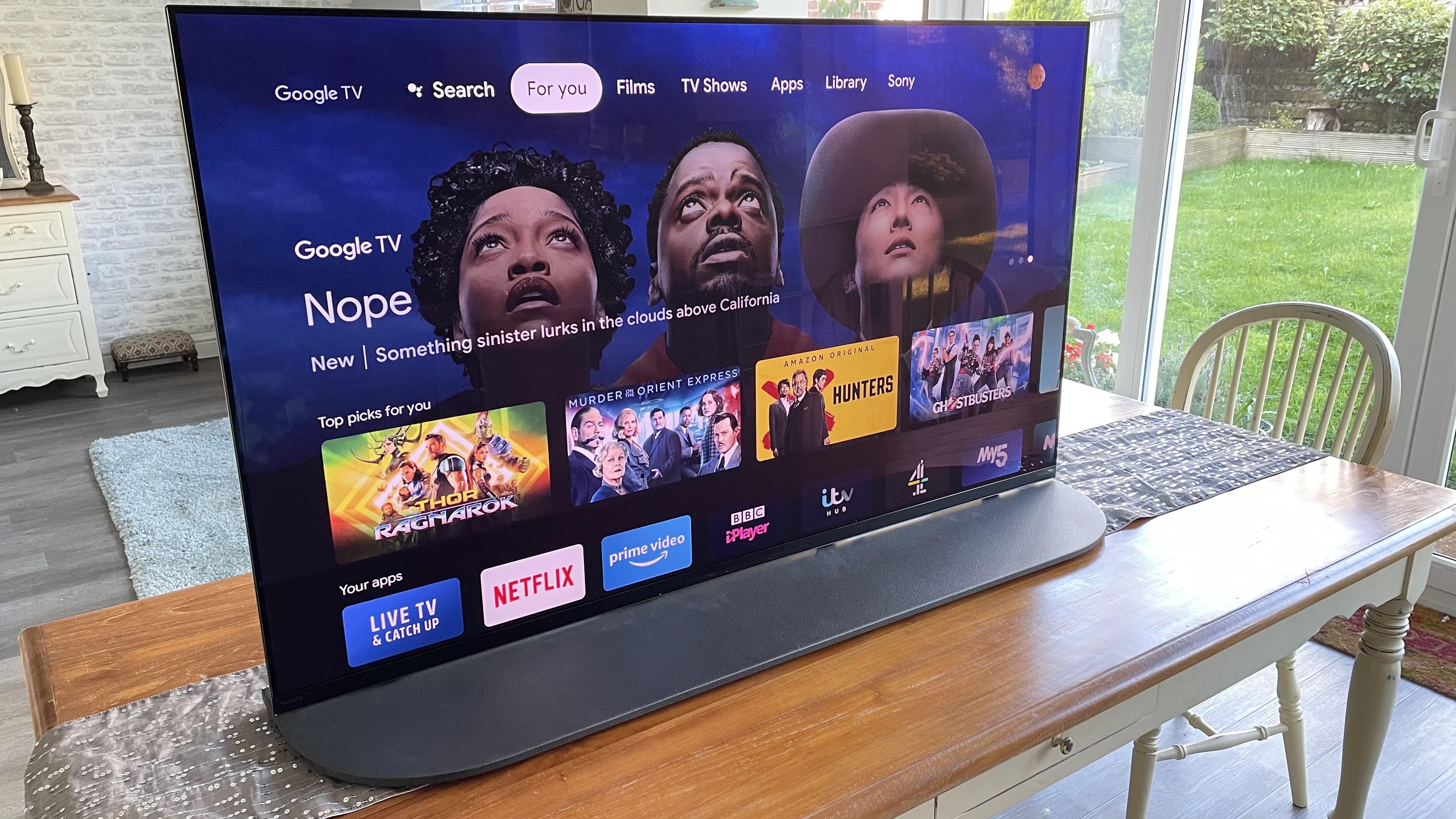
Sony A95K review: Features
- 4K Quantum Dot OLED screen
- Acoustic Surface Audio+ sound system
- HDMI 2.1 features for gaming
As you’d hope given how much it costs, the A95K has a lot going on. Starting, of course, with that all-important Quantum Dot OLED panel.
This new technology shines a blue OLED light source through layers of red and green Quantum Dot color filters in a bid to deliver both the awesome black levels and pixel-level light control associated with regular OLED TVs, plus the brightness associated with Quantum Dot LCD TVs, such as Samsung's QLED range.
Sony and Samsung both claim that QD-OLED’s approach does not make its S95B and A95K TVs more susceptible to permanent image retention than regular OLED sets, despite their potential extra brightness.
While brightness is always a big deal in today’s world of HDR movies, the A95K’s biggest attraction might actually come from its color performance. Using only red, green and blue elements without the extra white element regular OLED TVs use should, on paper, enable the delivery of purer, richer colors. Especially in the brightest HDR picture areas.
These core QD-OLED attributes are, of course, shared across both the Sony A95K and Samsung S95B ranges. So let’s get into where Sony’s QD-OLED debutante forges its own path.
Perhaps the most important difference lies in its processing. It benefits from the latest version of Sony’s Cognitive XR processor, with its ultra-watchable ability to analyze and subtly manipulate incoming images to help them look more realistic – or, to be more precise, more in keeping with the way your eyes perceive the real world. Or so the claim goes.
Sony’s TV images, though, are also always motivated by a desire to achieve results that get as close as possible to the way things look on professional-grade mastering monitors. So AV purists shouldn’t start fretting that any of the Cognitive Processor XR’s activities are going to lead to pictures not looking like they’re supposed to.
On the contrary, the Cognitive Processor XR system’s ability to optimise its workings to suit different types of screen (given Sony’s impressively agnostic approach to the screen technologies it includes in its range) has the potential to unlock the very best from QD-OLED’s baked-in advantages.
Sony’s take on QD-OLED also has a few third-party picture quality endorsements to its name. It’s been granted IMAX Enhanced status, carries an array of other Creator Calibrated modes (including a Netflix-approved one), and is ‘Calman Ready’, indicating that it has enough setup flexibility and potential image accuracy to be calibrated to production editing studio standards.
The A95K’s audio configuration differs from the rest of the TV world (bar Sony’s own other OLEDs) too, thanks to its Acoustic Surface Audio+ system. This uses actuators to make the actual screen itself create the majority of its sound, backed up by two bass woofers built into the TV’s rear.
The Acoustic Surface Audio+ approach delivers advantages of forward firing sound and the ability to place sounds in exactly the right place to match the action on its screen.
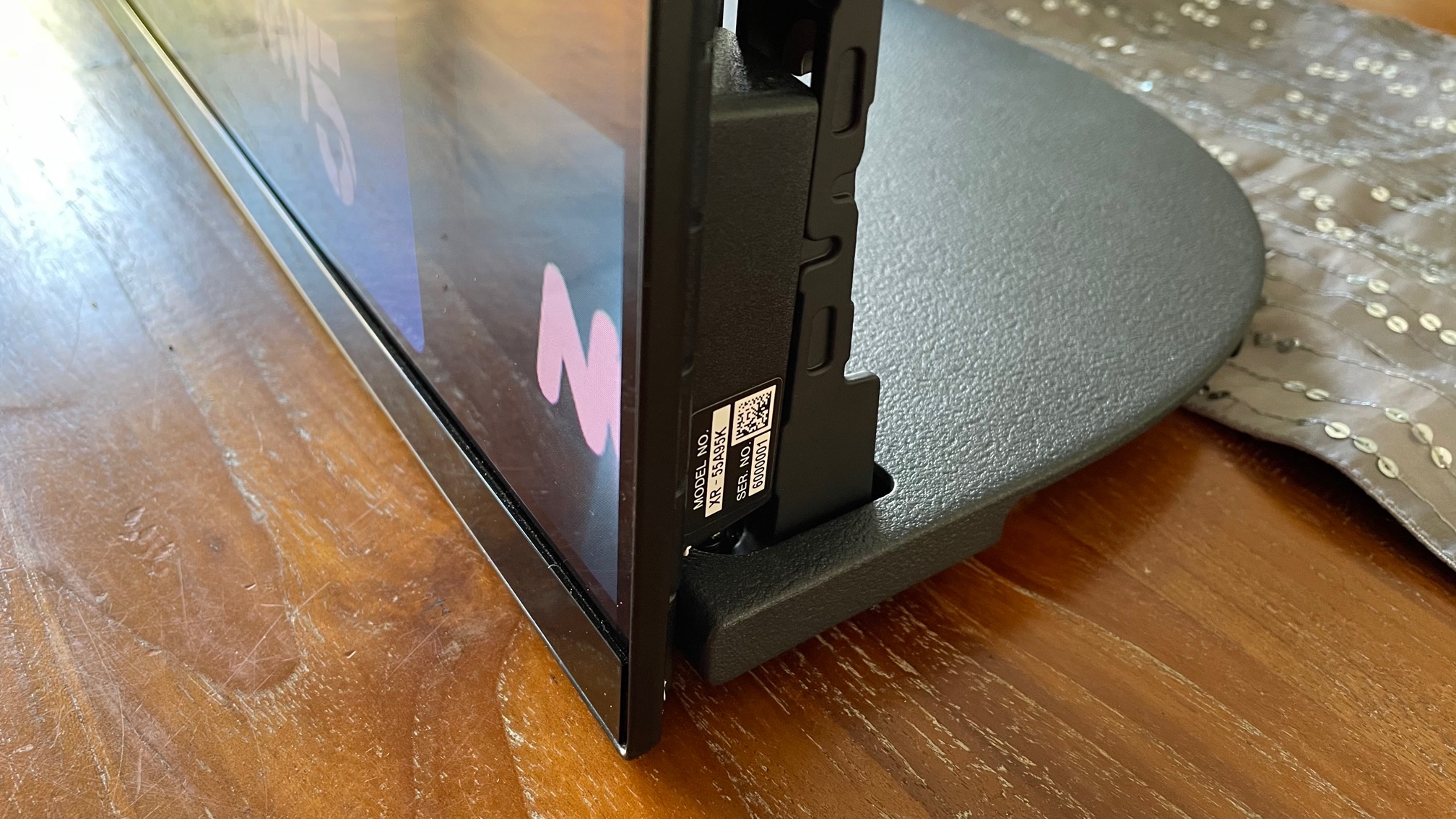
Given how the A95K’s sound works, it’s good to find it carrying a sound input that enables it to become the center channel in a wider home theater speaker installation. It can additionally partner up with Sony soundbars to provide reinforcement for those soundbars’ center-channel efforts, meaning dialogue should be as clean as possible.
The set’s eARC HDMI support enables pass through of both Dolby Atmos and – unusually in today’s TV market – DTS:X soundtracks losslessly to compatible soundbars and AV receivers.
Having started to talk about the Sony A95K’s four HDMI connections, there’s quite a bit more to say about them too. Starting with the ability of two of them to support the latest cutting edge gaming features of 4K images at 120Hz frame rates; variable refresh rates; as well as compatibility with the Auto HDR Tone Mapping and Auto Genre Picture mode features that are at the heart of Sony’s ‘Perfect for PlayStation 5’ cross-marketing campaign.
The first of these Perfect for PS5 features finds the console automatically optimizing its HDR game output settings based on being able to read the identity of the Sony TV it’s connected to, while the Auto Genre Picture mode is essentially a proprietary Sony version of the Auto Low Latency Mode HDMI 2.1 feature that enables TVs to switch in and out of their low-latency game picture presets automatically as a console or PC switches between game and video sources.
Confusingly, though, ongoing issues with the HDMI silicon Sony is using mean you have to choose between compromises even with the two full bandwidth HDMI 2.1 ports. In particular, there’s no 4K 120Hz Dolby Vision gaming mode for Xbox users, and actually you can’t enjoy Dolby Vision at all from any source if you don’t choose the necessary setting from the HDMI set up menu.
It’s worth quickly adding here that as with all Sony TVs to date, the A95K doesn’t support the HDR10+ format – only HDR10, HLG and Dolby Vision.
Happily there is at least no recurrence of the old 'half-resolution at 120Hz' issues that have affected some previous Sony TVs, but it would still be nice if Sony can finally move past these sorts of niggly HDMI limitations for its 2023 range.
Last and, actually, least on the Sony A95K’s extensive feature list is the new Bravia Cam. This is included as standard, and to be fair opens up a host of innovative features beyond the obvious ‘video call’ facility. It can, for instance, track where you are in the room and adjust the sound balance to give you the best results for that seating position. It can also track how far away you are from the screen and adjust both image brightness and vocal playback accordingly -– or, if you have young children in the house you can use the camera to have the TV issue an alert if one of them ventures too close to your beloved gogglebox.
The Bravia Cam even supports control of the TV via gestures if the TV’s remote controls and voice recognition support aren’t working for you - though this joins with past experience of gesture control ‘experiments’ by other brands in feeling more frustrating and tiring than genuinely helpful.
In fact, while it’s interesting to see Sony working so hard to come up with uses for Bravia Cam (some of which are still to actually come on line pending firmware updates), I have to say for the most part I didn’t find it a very compelling feature. More like a slightly pointless trip down memory lane than a bold glimpse into the future.
- Features score: 4.5/5
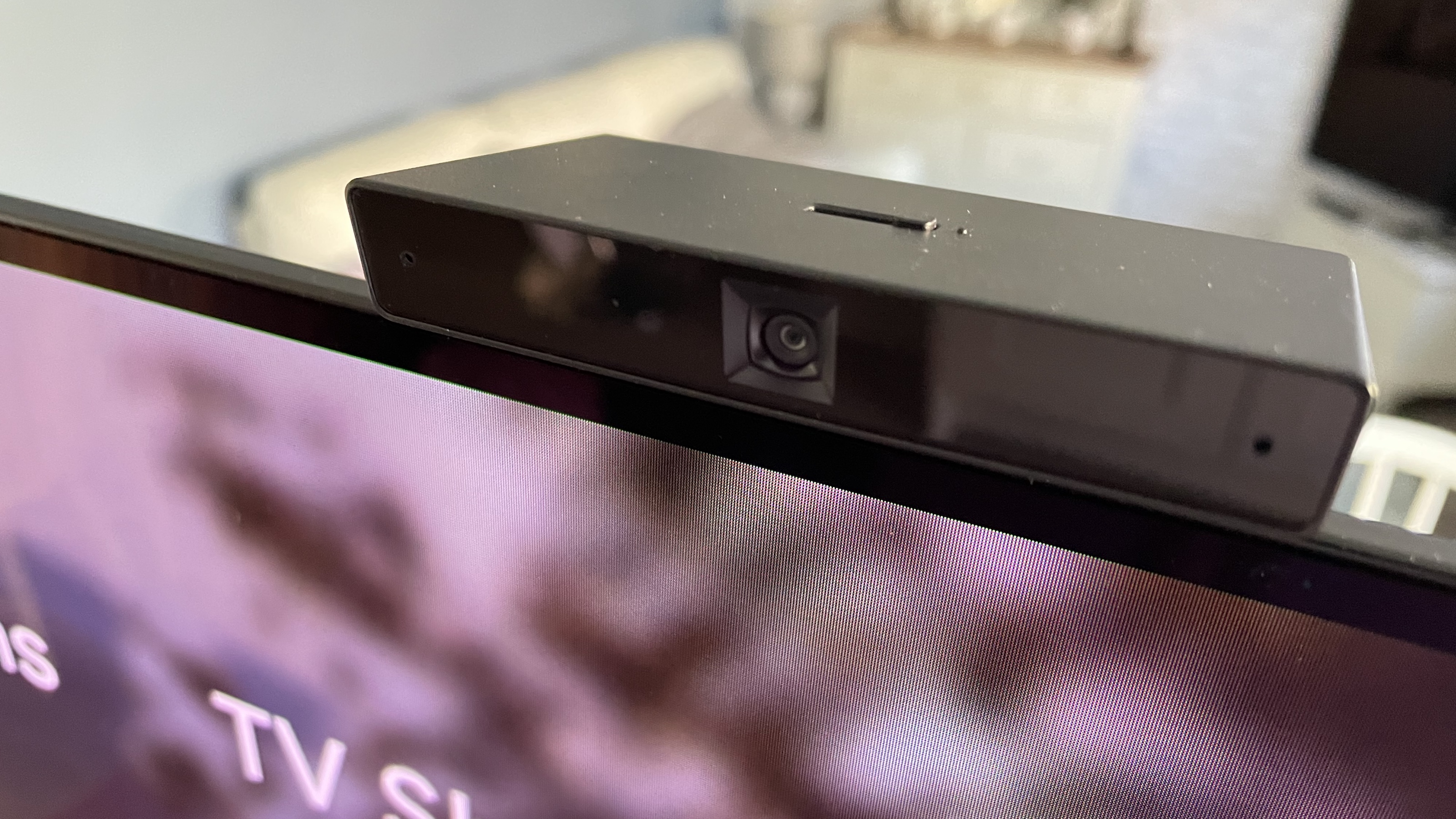
Sony A95K review: Picture quality
- Stunning wide color performance
- Lovely image processing
- Spectacular local contrast
The Sony A95K wears its QD-OLED heart on its sleeve to glorious effect. The moment you start watching any high dynamic range images, in particular, you become spectacularly aware of an extra level of local contrast to anything pretty much any regular OLED TV – bar, perhaps, LG’s G2 series – can muster.
Bright highlights look phenomenally punchy and intense, even (or especially) if they appear against dark surroundings, the latter of which are delivered with black levels easily as deep as any we’ve ever seen from any OLED TVs before.
The gorgeously bold HDR highlights also enjoy more subtle color and tonal shading than usual with OLED screens, as the QD-OLED panel’s marginally higher innate brightness support helps it deliver better HDR tone mapping and less brightness ‘clipping’.
The intensity of the A95K’s peak brightness highlights is not quite as explosive as that of Samsung’s S95B QD-OLED screens, However, there’s a more controlled feel to it that contributes to what feels like a more consistently balanced and refined experience, where the extra brightness is being used to push closer to the performance of premium mastering monitors rather than being merely brightness for brightness sake.
While it’s the extra punchiness of the brightest image areas that first catches your eye, over time and with a wide range of content it becomes clear that peak brightness isn’t in truth massively higher (we measured around 1,025 nits at peak on a 10% HDR window) than the brightness now being achieved by the very best regular OLED TVs. Certainly not as massively different as pre-launch QD-OLED hype may have got us hoping.
Longer viewing, though, also made us increasingly aware of how fantastically subtle the A95K’s light engine can be. It picks out even the tiniest, faintest details in even the darkest corners of the picture with a precision, delicacy and freedom from noise that we’ve seldom seen before. This ensures that films enjoy exactly the same sense of depth, detail and naturalism in dark scenes as they do in bright scenes, delivering a gorgeously consistent and so immersive viewing experience.
Since QD-OLED is a self-emissive technology, moreover, the A95K’s gorgeous mixture of ultra-punchy brightness peaks and basically perfect black levels is achieved without so much as a hint of the sort of backlight clouding you get to some extent with any LCD solution.
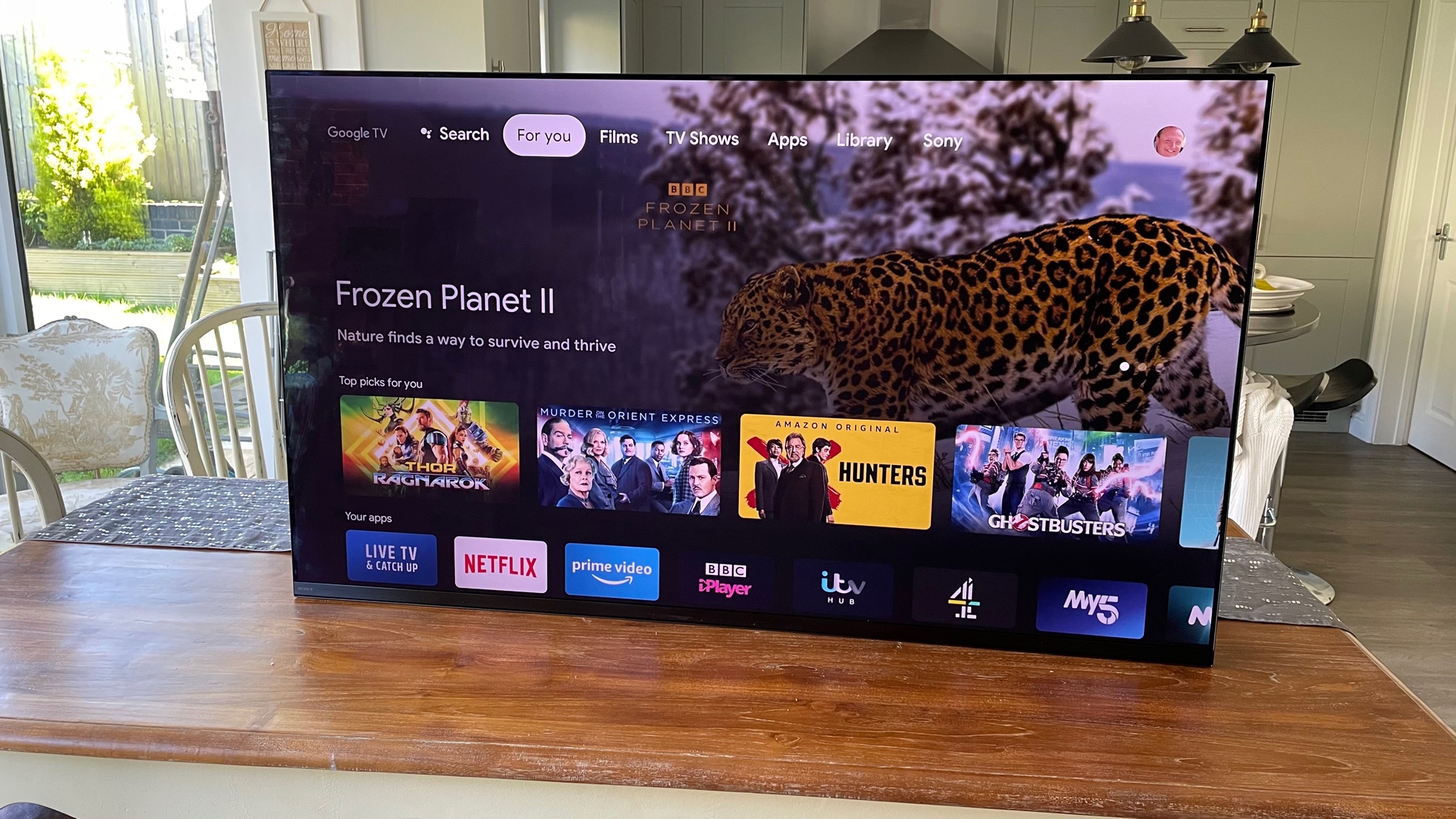
The biggest revelation during longer term viewing, though, is that the A95K’s single most significant achievement is not its brightness or even its contrast, but its color range.
With any richly saturated HDR source that’s partnered – as pretty much all are – by a wider color gamut, the pure RGB nature of the QD-OLED panel’s color system delivers levels of saturation and natural toning beyond anything we’ve seen before. Especially when it comes to the brightest and darkest extremes of the set’s massive color palette.
Samsung’s S95B QD-OLED TVs demonstrate the same sort of ground-breaking color performance too. In fact, it’s more in your face about it than the Sony A95K, especially when gaming. As with the brightness, though, Sony’s processing results in more consistently natural and balanced looking colors, avoiding the occasional rogue tone of its Samsung rival. It’s nigh-on impossible, in fact, to find a color tone on Sony’s set that doesn’t look absolutely right.
Happily Sony’s adoption of new QD-OLED technology has not led to any compromises to the brand’s traditional areas of TV expertise. So motion, even with 24 frames-per-second movies, is handled excellently, at least using the provided True Cinema motion option. This takes the hard edge off judder without creating the over-smooth ‘soap opera effect’ or generating obvious unwanted processing side effects.
Add this motion prowess and excellent levels of sharpness and 4K detail to the TV’s pixel-level light control and immaculate ‘Triluminos’ colour system and you’ve got the closest pictures we’ve seen on a consumer TV to the sort of images usually only seen on pro-grade monitors.
While the A95K is, of course, at its best with native 4K and HDR content, its Cognitive Processor XR also does excellent job of both upscaling HD content to 4K, and converting SDR sources to HDR (something that happens automatically with many of its picture presets). The upscaling adds lots of detail without exaggerating noise or losing that natural feel that’s so key to Sony’s processing aims, while the HDR conversion really does typically make SDR sources look more lifelike and natural, rather than forced and unbalanced as is the case with many HDR conversion systems.
It’s pretty hard in truth to find fault with the Sony A95K’s ground-breaking pictures beyond the lack of Dolby Vision gaming support and the fact that brightness isn’t quite as ‘out there’ as we might have hoped.
But we’re duty bound to nitpick where we can, so… The A95K’s screen is quite reflective of direct light, and as with Samsung’s S95B Quantum Dot OLED screens, significant direct light can cause the set’s usually immaculate black levels to take quite a turn towards the grey, too. Also, the unusual triangular structure of QD-OLEDs red, green and blue sub-pixels can lead to a little blurring if you’re using the TV as a monitor to handle fairly small text. This issue seems to have a negligible impact on regular video images, though – if using it for standard TV business, you'll have no issues with that.
- Picture quality score: 5/5
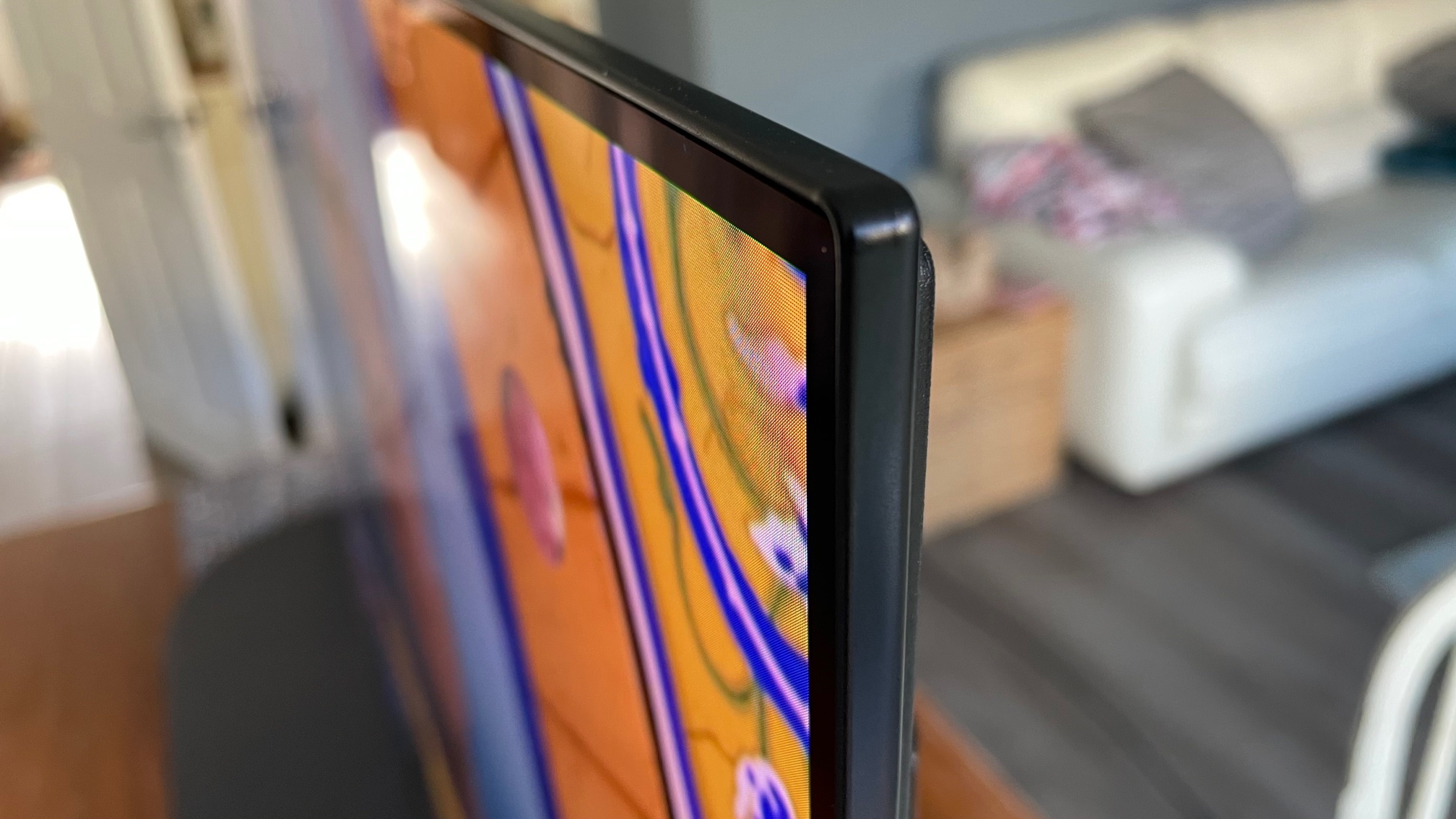
Sony A95K review: Sound quality
- Excellent forward impact and accurate detail placement
- Strong dynamic range
- Plenty of power
Using the A95K’s screen as its speaker system proves every bit as successful on this Quantum Dot OLED TV as it has previously with Sony’s regular OLED TVs.
The sound’s directness is particularly excellent, pushing forward towards you with enough power and dynamic range to fill even a large room with an immersive, enveloping sound stage. Most rival TVs, by comparison, sound flat, or even as if their sound is coming from behind the TV.
There’s a lovely open, clean quality to the sound stage’s extensive mid-range, too, that doesn’t even begin to break down into any crackling or distortions until you’ve pushed the TV’s volume way past levels most ears will be comfortable with.
The A95K’s two bass woofers tie in astutely with the unusually expansive mid-range, too, underpinning action movie soundtracks with enjoyable and engaging amounts of smooth, convincing bass. Again, this bass is delivered without distortion if you stick within sane volume levels, and helps the sound to escalate and grow far beyond the scale achieved by most built-in TV sound systems.
Also impressive to hear is how accurately the A95K places specific sound details. If a car drives across the screen, its sound moves across the screen with it. It’s surprising how much this enhances your immersion in a good movie or TV show.
As with its picture quality, it’s hard to find any serious flaws with the A95K’s sound. We guess its unusually open, almost warm tone means there’s a chance the TV won’t blend particularly effectively with wider speaker systems if you decide to use its center channel capabilities. But this is a small point given that most TV speaker systems won’t even support such a feature.
- Sound quality score: 5/5
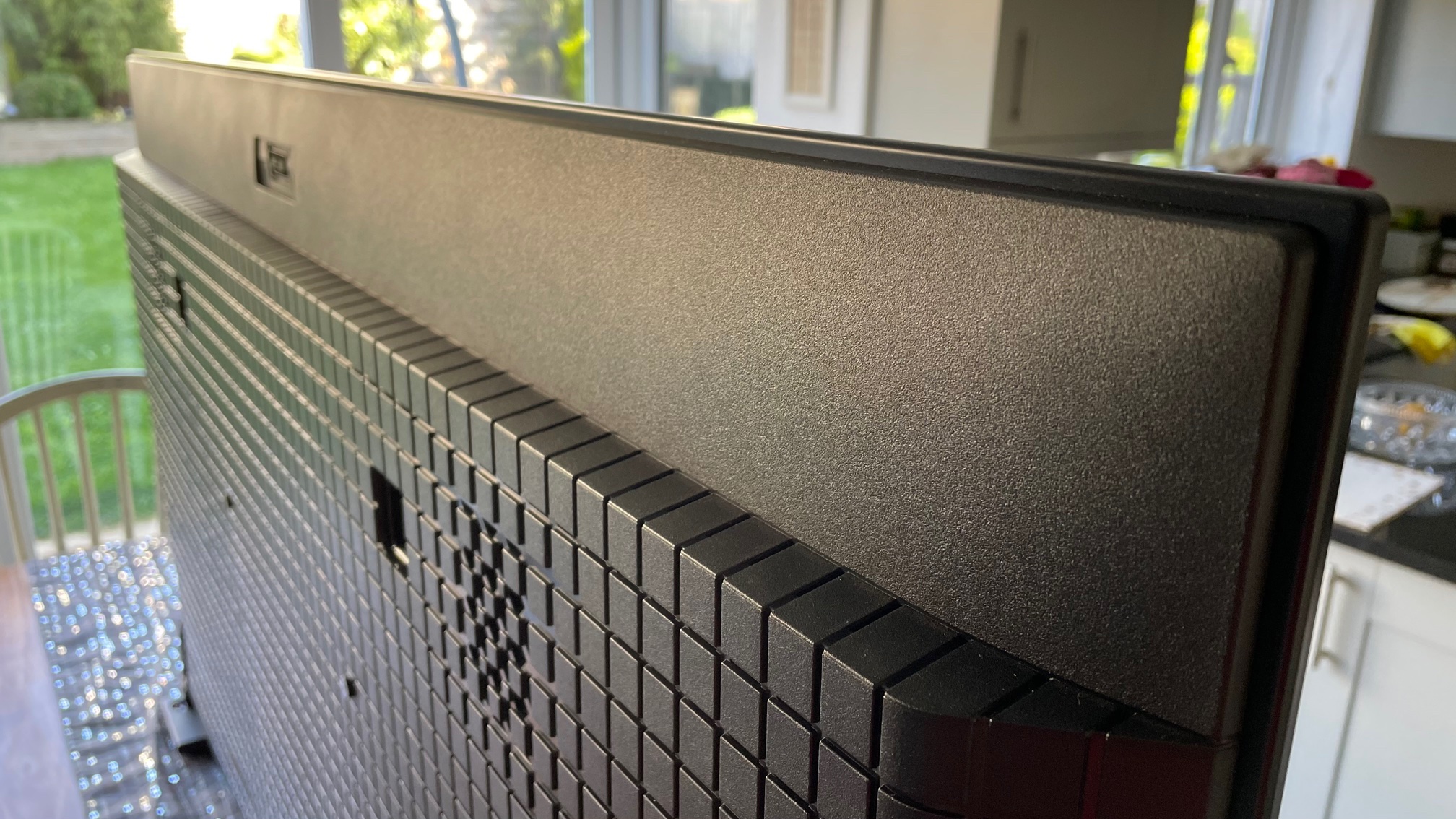
Sony A95K review: Design
- Two different stand mount possibilities
- Extremely heavy duty built quality
- Unusually chunky for an OLED TV
The Sony A95K takes its design cues, very deliberately, from the company's first 4K OLED TV, the classic KD-65A1. In what we think will be its most popular configuration, it can slot down flush to the front of a full-width black metal plate support so that it seems from the front as if it’s magically holding itself upright without any obvious support. If you’d rather have the screen pushed right up against your wall, though, you can attach the screen to the back of the desktop support plate, so that the stand becomes a visible part of the design.
The frame around the A95K’s screen is dark, slim and beautifully finished, adding to the TV’s minimalistic charms, while the general build quality is outstanding.
The set’s quite chunky round the back by OLED TV standards, but Sony manages to continue the minimalistic approach by cladding the rear in an all-over mosaic patterned cover that features detachable sections you can remove to access the TV’s connections.
The A95K ships with two remote controls: one standard, button-laden one, and a more stripped-back affair that will likely become the main remote of choice once initial installation is complete. Both remotes are comfortable to hold and reasonably straightforwardly laid out – and frankly it’s just nice to see Sony finally embracing the idea of a second ‘smart’ remote at all.
- Design score: 4.5/5
Sony A95K review: Smart TV & menus
- Google TV smart system
- Voice recognition support
- YouView provided for UK catch up services
The A95K’s smart features are provided by the Google TV system. This is mostly pretty good news given that Google TV improves on its Android TV predecessor in terms of both its presentation and its tools for helping you track down content you’re likely to want to watch.
Sony has tackled Google TV’s issues with carrying all of the UK’s catch-up TV services too, by adding support for the YouView app, which brings together all of the UK’s key terrestrial broadcaster systems into one handy guide.
Also worth mentioning here is Bravia Core: Sony’s own streaming service, which claims to provide superior picture quality by supporting much higher bandwidths than the likes of Netflix and Amazon Prime Video. Provided, of course you’ve got the broadband capabilities (at least 80Mbps) to take advantage of it. As a buyer of the A95K you’re entitled to 10 free movie redemptions, and 24 months of unlimited streaming.
One last Google TV feature of note is its support for the Google Assistant voice recognition system.
- Smart TV & menus score: 3.5/5
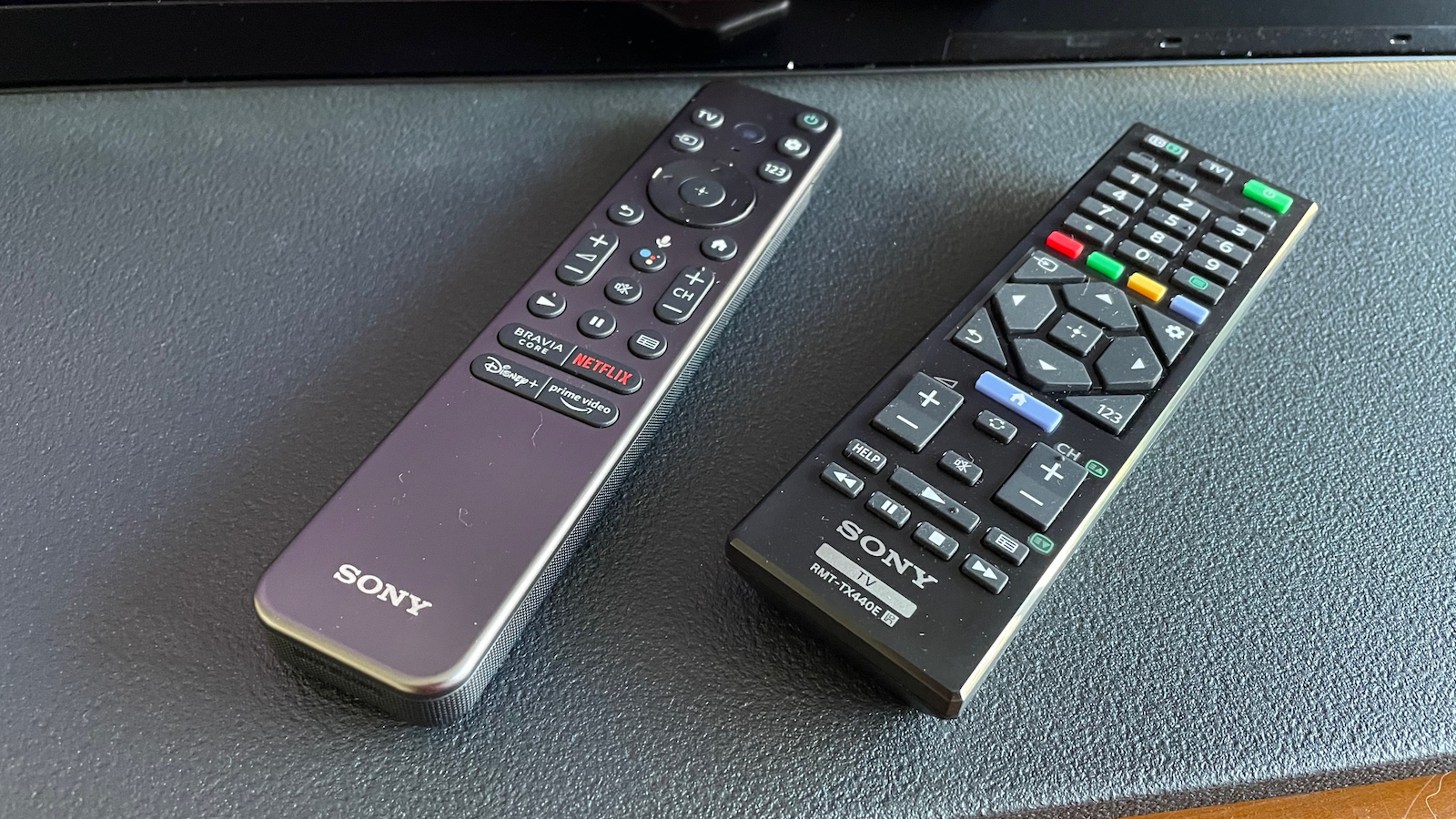
Sony A95K review: Gaming
- 4K 120Hz support
- VRR and ALLM support, plus special PS5 features
- No Dolby Vision gaming mode
As noted already, it’s a little frustrating that a TV as otherwise cutting-edge as the A95K can’t support Dolby Vision gaming with 4K 120Hz signals. If you want Dolby Vision you have to stick with 4K at 60Hz. The set does still support regular HDR10 with 4K 120Hz, though – and has its exclusive-to-PS5 Auto HDR Tone Mapping feature, which is basically Sony's own proprietary Dolby Vision setup for its own gaming tech.
It’s also a little disappointing given the lengths some flagship rival TVs go to in this respect that there’s no support for the AMD FreeSync flavour of variable refresh rates, let alone Nvidia G-Sync; that only two of the TV’s HDMI ports rather than all four support 4K 120Hz and variable refresh rates; and that there’s no dedicated gaming set up menu/info screen of the sort now provided by Samsung and LG on their premium TVs.
The A95K does deliver a super fast response that pretty much does away with all traces of gaming motion blur. Input lag isn’t quite as low as we’ve seen with some rival TVs this year, measuring just under 17ms with 1080p 60Hz sources and 9.4ms with 4K 120Hz sources. This is still substantially below a frame a second, though, so unless you’re a pro gamer you’ll probably struggle to blame the A95K for your Call Of Duty demises.
The A95K’s gaming presentation is not as deliriously aggressive as that of Samsung’s S95B QD-OLEDs TV. However, it still stands out in its own less shouty way with a beautifully polished performance, regardless of whether you game at 1080p, 4K, 120Hz or 60Hz, that in its own thoughtful way delivers an experience as refined versus most of the competition as the TV’s video performance.
- Gaming score: 4/5
Sony A95K review: Value
- Positioned as Sony’s flagship 4K TV
- Significantly more expensive than its closest rival
- Price seems fair for the all-round performance
Value is perhaps one of the A95K’s weakest areas, though it's partly in the eye of the beholder. At $3,000 / £2,399, you’ll struggle to find a 55-inch TV that costs more without going for one of Bang & Olufsen’s ultra-premium models. There are high-quality 55-inch regular OLED TVs available for as little as half the 55-inch A95K’s price, and – most awkwardly of all – the Samsung’s S95B is at the time of writing available for as little as $1,799 / £1,299, despite being the only other 55-inch Quantum Dot OLED in town.
While Samsung’s set delivers punchier HDR pictures and slightly better gaming support (apart from not supporting Dolby Vision in any way), though, the Sony delivers better picture quality overall. In fact, it delivers arguably the best all-round picture picture quality we’ve ever seen from a consumer television. Which suddenly casts its ‘robust’ price in a whole new ‘if you want the best, you have to pay for it’ light.
If you can afford it and it’s not going to be mostly watched with lots of direct light shining onto the screen, you most definitely should consider buying the A95K. The way Sony’s latest picture processing engine gets so much quality out of its new Quantum Dot OLED panel at the first time of asking is mesmerizing, giving AV fans the closest thing yet to a professional mastering monitor in your living room.
Samsung’s QD-OLED alternative is cheaper, can deliver punchier pictures and is great for gaming – but it’s also less refined and consistent, and its sound falls way short of that of the A95K. LG’s G2 OLEDs, meanwhile, have also shown this year just how fantastic regular OLED TVs can get. When the A95K is firing on all cylinders, though, it remains the new set to beat.
- Value score: 4/5
Should you buy the Sony A95K?
| Attributes | Notes | Rating |
|---|---|---|
| Features | Very well-equipped overall, from movies to gaming needs. | 4.5/5 |
| Picture quality | Perhaps the best, most refined image quality on the planet. | 5/5 |
| Sound quality | As good as it gets – very clear, very open, very rich. | 5/5 |
| Design | Pleasingly minimalist, and with two useful remotes. | 4.5/5 |
| Smart TV and menus | Google TV is good, but other platforms are a little slicker in places. | 3.5/5 |
| Gaming | Support for everything key, and with some special sauce for PS5 owners. | 4/5 |
| Value | It's very expensive, but every penny is up on the screen. | 4/5 |
Buy it if…
You want class-leading picture quality
A Quantum Dot OLED panel plus Sony’s Cognitive Processor XR turns out to be a match made in picture quality heaven.
You want room-filling built-in audio
The A95K’s Acoustic Surface Audio+ approach of using the screen as the speakers works brilliantly, producing an excellently open, powerful, detailed and expansive sound by TV standards.
Don't buy it if…
You’re a Dolby Vision gamer
None of the A95K’s HDMI connections support Dolby Vision HDR with games played at 4K resolutions and 120Hz frame rates at the same time. So if you want to get the absolute most from your Xbox Series X, this isn't where you'll find it.
Funds are limited
While not actually bad value given just how excellent it is, the A95K is very expensive for a 55-inch TV. Even compared with Samsung’s S95B Quantum Dot OLED rival, or other regular OLED TVs.
Also consider
Samsung S95B
The only other Quantum Dot OLED TV you can buy in 2022 is bright, colorful, incredibly sleekly designed and much cheaper than the Sony. But its pictures aren’t as refined and it doesn’t sound anywhere near as good.
LG G2
Despite using traditional OLED technology, the G2’s combination of the latest-gen WRGB OLED panel, a heat sink, LG’s massive OLED experience,and class-leading gaming support deliver a gorgeous TV that earns its high (but cheaper than the Sony) price. Though it doesn't come with a stand in the box, just FYI…
Samsung QN95B
We’ve included this high-priced beast from Samsung partly because its Mini-LED technology delivers excellent, super-bright LCD pictures that can cut through even bright light, but it's also worth noting for its size options, coming in with 75-inch and 85-inch options, which the QD-OLED TVs lack.

John has been writing about home entertainment technology for more than two decades - an especially impressive feat considering he still claims to only be 35 years old (yeah, right). In that time he’s reviewed hundreds if not thousands of TVs, projectors and speakers, and spent frankly far too long sitting by himself in a dark room.
